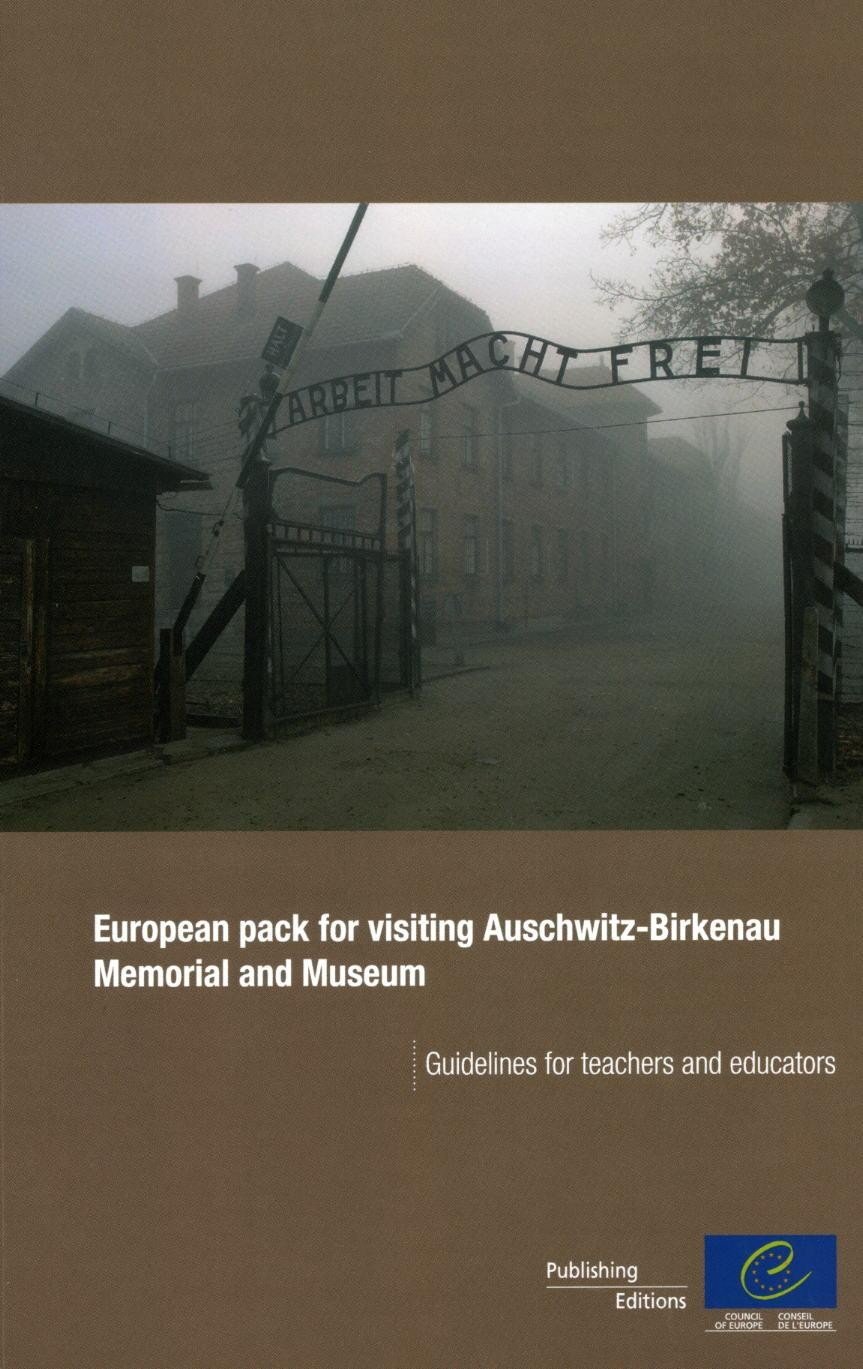



Taking groups of students to the Auschwitz-Birkenau Memorial and Museum is a heavy responsibility, but it is a major contribution to citizenship if it fosters understanding of what Auschwitz stands for, particularly when the last survivors are at the end of their lives. It comes with certain risks, however.This pack is designed for teachers wishing to organise student visits to authentic places of remembrance, and for the guides, academics and others who work every day with young people at Auschwitz.There is nothing magical about visiting an authentic place of remembrance, and it calls for a carefully thought-out approach. To avoid the risk of inappropriate reactions or the failure to benefit from a large investment in travel and accommodation, considerable preparation and discussion is necessary before the visit and serious reflection afterwards. Teachers must prepare students for a form of learning they may never have met before.This pack offers insights into the complexities of human behaviour so that students can have a better understanding of what it means to be a citizen. How are they concerned by what happened at Auschwitz? Is the unprecedented process of exclusion that was practised in the Holocaust still going on in Europe today? In what sense is it different from present-day racism and anti-Semitism?The young people who visit Auschwitz in the next few years will be witnesses of the last witnesses, links in the chain of memory. Their generation will be the last to hear the survivors speaking on the spot.The Council of Europe, the Polish Ministry of Education and the Auschwitz-Birkenau Memorial and Museum are jointly sponsoring this project aimed at preventing crimes against humanity through Holocaust remembrance teaching.
Preamble and acknowledgements
Auschwitz - The European dimension
The symbolism of Auschwitz and its universal message
1. Before the visit
1.1. What preparations need to be made for visiting Auschwitz and why?
1 .2. The problem of age and coping with emotion as a visitor to Auschwitz
1.3. What do students need to know before the visit?
1.4. Organising workshops to prepare students for the visit
1.5. Meeting a survivor as part of the preparatory process
1.6. Visiting Cracow and Oswiecim as a way of learning more about the culture of Polish Jews in the context of Polish history
1.7. How should you plan a visit to the Auschwitz-Birkenau State Museum?
1.8. Activity - How could people create such a fate for others?
1.9. Activity - Functions of "Auschwitz Concentration Camp"
1 10. Activity - Individual and collective meaning of a visit to Auschwitz
1.11. Activity - Coping with emotions at Auschwitz
1.12. Activity - Photographs of Auschwitz
1.13. Activity - Documentary films about Auschwitz
2. During the visit
2.1 . Who created the museum, and why?
2.2. Educational work and programmes offered by the Auschwitz-Birkenau State Museum in Oswiecim
2.3. A brief description of the exhibits at the Auschwitz-Birkenau State Museum in Oswiecim
2.4. Visiting the museum
2.5. What is appropriate behaviour while visiting Auschwitz?
2.6. What are the main difficulties faced during visits to Auschwitz?
2.7. International youth meetings in Oswiecim
2.8. Programmes offered by other Oswiecim-based institutions dealing with education about Auschwitz and the Holocaust
3. After the visit
3.1. How to evaluate the visit
3.2. Getting back to normality after a visit to Auschwitz
3.3. Various activities for students after their visit to Auschwitz
3.4. Suggestions for interdisciplinary projects on the relationship between Auschwitz and the present day
3.5. Meeting a survivor
3.6. Activity - "There is a station they reach, from wherever they came..."
3.7. Activity - What to do with what we learn in Auschwitz
3.8. Activity - The fate of individual victims of Auschwitz in documents, testimonies and photographs
Editors' and authors' biographies
Télécharger un extrait (1000)

Taking groups of students to the Auschwitz-Birkenau Memorial and Museum is a heavy responsibility, but it is a major contribution to citizenship if it fosters understanding of what Auschwitz stands for, particularly when the last survivors are at the end of their lives. It comes with certain risks, however.This pack is designed for teachers wishing to organise student visits to authentic places of remembrance, and for the guides, academics and others who work every day with young people at Auschwitz.There is nothing magical about visiting an authentic place of remembrance, and it calls for a carefully thought-out approach. To avoid the risk of inappropriate reactions or the failure to benefit from a large investment in travel and accommodation, considerable preparation and discussion is necessary before the visit and serious reflection afterwards. Teachers must prepare students for a form of learning they may never have met before.This pack offers insights into the complexities of human behaviour so that students can have a better understanding of what it means to be a citizen. How are they concerned by what happened at Auschwitz? Is the unprecedented process of exclusion that was practised in the Holocaust still going on in Europe today? In what sense is it different from present-day racism and anti-Semitism?The young people who visit Auschwitz in the next few years will be witnesses of the last witnesses, links in the chain of memory. Their generation will be the last to hear the survivors speaking on the spot.The Council of Europe, the Polish Ministry of Education and the Auschwitz-Birkenau Memorial and Museum are jointly sponsoring this project aimed at preventing crimes against humanity through Holocaust remembrance teaching.
Attention, en vertu de nos conditions générales de vente, l'achat des PDF/epub est réservé aux particuliers.
